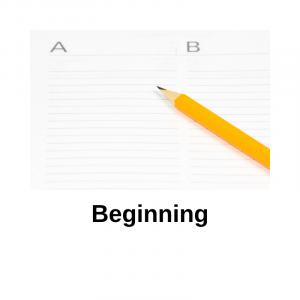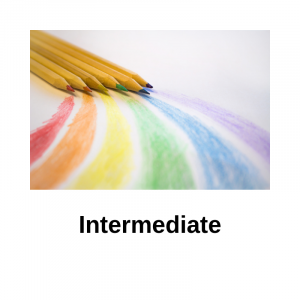7 Sentence Basics
Recap
In Grammar Basics (Chapter 6) the four main sentence types – statement, exclamation, question, and command – were introduced. Plus, sentences are made up of smaller parts we call clauses and there are two different types of clauses. Therefore, you have the building blocks of good sentence structure – words (parts of speech), word groups (clauses). (Click on each bold font word for a definition)
Active and Passive Voice
At this point, it is important to recognise another key element in sentence structure – the object. A direct object in a sentence is always a thing or a person who receives the action of the verb. When a subject performs an action on an object (S-A-O), this is known as an ACTIVE VOICE in writing.
For example: The girl (subject) ate (verb) the strawberries (object).
Alternatively, when the subject of the sentence is receiving the action or when the object of the sentence is performing the action (O-A-S), this is known as PASSIVE VOICE.
For example: The strawberries (subject) were eaten (verb phrase) by the girl (object).
The strawberries have been made the most important noun of the sentence by the positioning, and therefore the subject of the sentence.
Many writers view passive voice as a weaker and less direct way of writing, however, it can be very helpful in avoiding personal (first person) pronouns in academic writing.
For example:
Incorrect – I suggest the research is incomplete, as indicated in the report…
Correct – The report indicated that the research is incomplete…
By moving the object (report) into subject position and replacing the personal pronoun (I), the meaning is actually made more succinct by this edit and the use of the personal pronoun, not recommended in academic writing, is negated.
Changing from the active to the passive voice also has the added benefit of being a useful paraphrasing technique, as the structure of the sentence must by necessity change (more about paraphrasing in Chapter 9).
Simple Sentence
The first and most basic form of sentence structure is one independent clause. That is, a clause with one subject and one main verb clause.
For example: Max (subject) waited (verb) for the bus (object).
Compound Sentence
A compound sentence is two or more independent clauses often linked by conjuctions.
For example: Max (subject) waited (verb) for the bus (object), even though (conjuctive phrase) the rain (subject) kept falling (verb phrase).
The second independent clause – the rain kept falling – could stand alone as a sentence and is not dependent on the first independent clause for its meaning.
Complex sentence
In a complex sentence the main independent clause is connected to one or more dependent clauses often using subordinating conjunctions(see Chapter 5 – Language Basics for conjunctions).
For example: Max waited for the bus, which was running late (dependent clause), even though the rain kept falling and (conjuction) was ruining his hat (dependent clause).



Choose the correct sentence type and voice for the following examples:
Take Away
Hopefully the simple structure of sentences is made more clear by understanding the building blocks of language and grammar.
WORD → WORD GROUP (CLAUSE) → SENTENCE
Every word and phrase (clause) serves a purpose in a sentence and should be planned and placed thoughtfully. Good academic writing begins with understanding the basics. Watch the following video to review key points about sentence structure.
has a declarative function
has an exclamitive function and is usually followed by an exclamation mark
has an interrogative function and is usually completed with a question mark
has an imperative function; giving an authoritive command; essential or urgent
a group of words including a subject and a verb
the subject of the sentence is the one actively performing the action of the verb
the subject undergoes the action of the verb or the object performs an action on the subject
concise
expressed in few words
cancelled
can stand on its on and must contain a subject (who or what) and a verb (an action being performed by the subject)
See 'Grammar Basics'
used to link words or phrases together
See 'Language Basics'
relies on the information in an independent clause to make a complete meaning
See 'Grammar Basics'
joins two grammatical units of unequal status, usually a dependent and an independent clause
See 'Language Basics'


